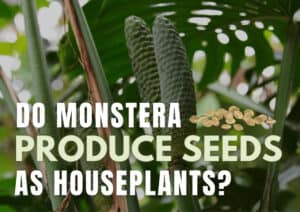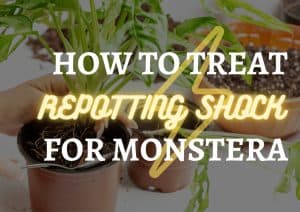Do All Monstera Species Get Fenestrations As They Age?
-
Chris Dosser
- November 19, 2022
If you buy something using the retail links in our articles, sometimes we earn a small affiliate commission. This does not impact the products we recommend.
Monstera plants are often colloquially referred to as “Swiss cheese plants.” A nod to the holes that develop in the leaves of many of the species found in the genus.
These holes are known botanically as fenestrations (fenestratus is Latin for ‘provided with openings’), a rare phenomena in the plant world, and the primary reason why Monstera are so popular and easily recognizable.
Not all Monstera species develop fenestrations in their leaves (M.subpinnata, M.spruceana, M.standleyana, and M.dissecta species are examples of those that will never develop fenestrations), however those that do will see fenestrations appear in their foliage more frequently as the plant matures.
For clarity, fenestration are not the same as lobes or splits. While the leaves of many plants have splits, further holes and ‘windows’ within the foliage are not a part of their structure.
Not all Monstera species develop splits and holes in their leaf tissue in the same way. Some, such as Monstera adonasii, display little windows on all leaves (even newly developed ones on young plants) whilst Monstera deliciosa produces solid green foliage without splits until the plant has produced at least five leaves.
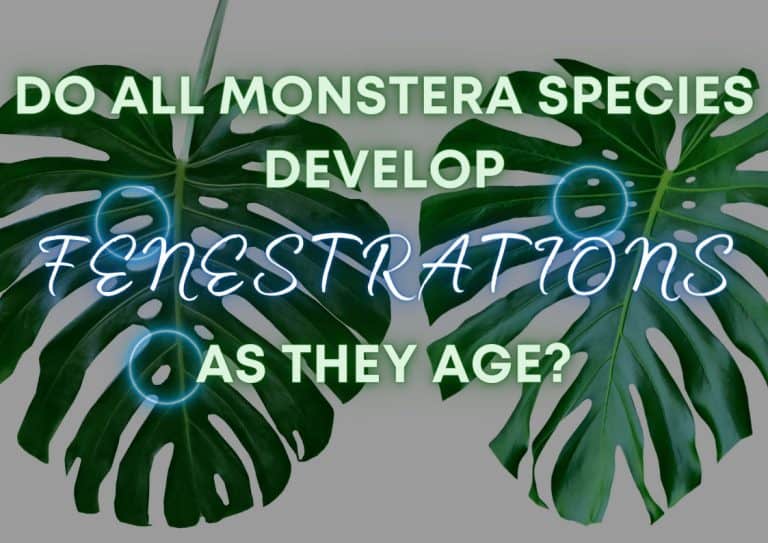
Are splits and fenestrations the same thing?
Though the terms “splitting” and “fenestrating” are often used interchangeably when discussing Monstera plants, they are technically different terms describing distinctly different morphological patterns.
However, there is some overlap in the terminology used to describe both, so many people use “splitting” as a blanket term for both phenomena.
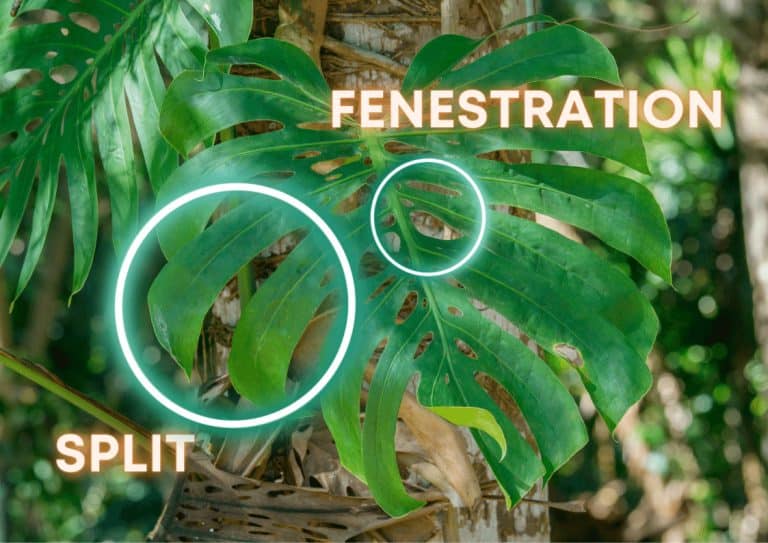
Monstera leaves like other aroids start out as a single united heart shape, meaning they are rounded with a tapered tip.
As the plant grows older, they begin to develop splits, creating natural lobes in pinnatifid style. These are not fenestrations, as they are not openings as much as they are incisions in the leaf’s surface.
Conversely, fenestration refers to the development of holes and perforations in leaves. These holes will not develop into full lobes and will remain as enclosed, circular openings within the plant tissue.
These holes tend to be quite large in older Monstera leaves (which in themselves have larger leaf blades) but may be small when they are collected around the leaf’s midrib or middle vein. These holes give the Monstera its nickname: the Swiss Cheese plant!
In the same way that not all Monstera species develop fenestrations, not all Monstera plants develop split leaves.
Many simply maintain non-lobed, unsplit leaves but still develop fenestrations or holes within their foliage. Examples of this include the adansonii, acuminata, siltepecana, acacoyaguensis, lechleriana, and obliqua species.
When do fenestrations in the Monstera genus usually develop?
There is no concrete way to determine with absolute certainty when a Monstera plant will develop fenestrations however broadly speaking most species in the genus will need to mature before their leaves being to fenestrate. Some do begin the process while still juvenile (i.e. Monstera adansonii) though this is rarer.
The best way to adequately guess when your Monstera will develop fenestrations is not by time but by growth. When they reach an adult or mature stage, this is when fenestrations are most likely to become a common feature.
For example, the popular Monstera deliciosa will usually need to hit a three-foot span before regular fenestrations. This can take two or three years.
It is also worth noting that variegated types of Monstera will take longer to develop fenestrations. This is due to the lack of chlorophyll in their leaves, which slows down their overall growth rate.
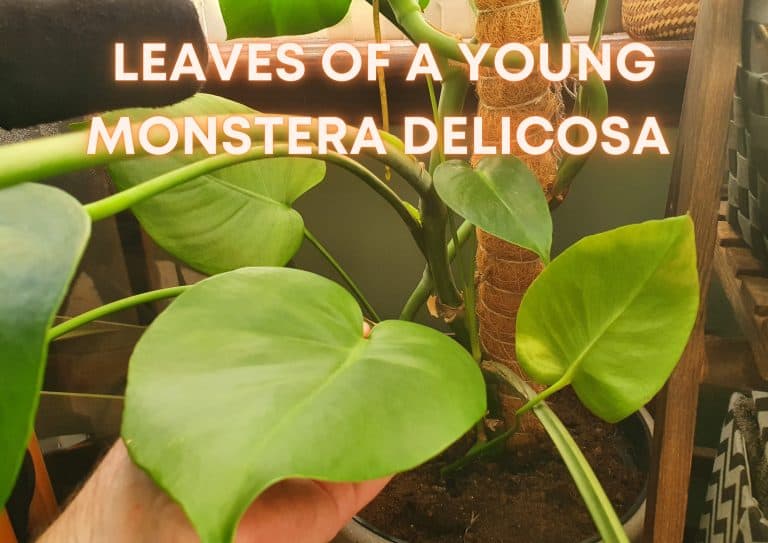
Our Favorite Monstera Plants And Supplies On Etsy
Why is my Monstera not fenestrating, and what can I do about it?
The most important element involved in fenestration (and splitting) is exposure to sunlight. Insufficient sunlight is the chief reason for a lack of fenestration in mature Monstera plants. Optimal growth conditions to encourage fenestrations involve providing the plant with 12 hours of bright, indirect light each day.
Light is important to a plant’s ability to use water and carbon dioxide to create food. Too little will start to stunt the plant’s growth, which prevents a Monstera from being able to fenestrate and reach ideal size. If this is the problem for your plant, you can provide grow lights or simply place your plant in a well-lit east- or south-facing window.
Your Monstera may also need more nutrients to fenestrate so that it can grow and support more and larger leaves.
All-purpose, well-balanced liquid fertilizers can help to do this. Sufficient water, well-balanced humidity levels, and a well-sized pot are also all necessary, as it is good growth that these plants must achieve so they can develop perforations.
Do note that you cannot force a Monstera to fenestrate through any artificial means. Your best bet lies in providing the plant with everything that it needs to ensure optimal and healthy growth.
Take home message
For Monstera that do produce fenestrations most will begin to express these iconic features naturally once a Monstera plant has reached maturity.
However, if a Monstera is not fenestrating, chances are that its growth conditions are not adequate. Sufficient sunlight, water, nutrients, and space to grow are all crucial to ensuring fenestration.
FAQs
Fenestrations in Monstera leaves are the result of early programmed cell death. Leafs of most plants in this genus start to develop distinct and discrete patches where their cells die off, creating perforations as small as pinholes. These holes can extend outward by a size of approximately 10,000 times the original pinprick window as the plant ages.
The pattern of the spots where cells die is entirely controlled by genetics and only occurs when the plant hits a certain growth area. But what biological purpose does this serve?
The true reason for the development of fenestrated leaves in the Monstera genus and in other plants, like the Madagascar laceleaf and in other Araceae genera, is not fully understood. Still, there are many theories and possibilities that experts have put forward.
The first and most commonly suggested possibility is related to absorbing necessary resources, such as sunlight and water. A Monstera’s large leaves may make it difficult for water to flow down to the plant’s roots and may also shade the plant’s other portions from much-needed sunlight. Fenestrations allow water and sunlight to both reach other areas of the plant.
The second theory is that these perforations can assist the plant in keeping cool by distributing heat and producing better turbulence and circulation. Finally, it has also been suggested that fenestration is a defense mechanism against herbivores. Supposedly, the leaves will look less enticing to hungry animals, thus preventing them from getting eaten.
Next, there is a theory that fenestration helps to reduce growth rate variations in Monstera plants. This is supported by the fact that fenestrations do not develop until a leaf is more mature and has access to all the nutrients it needs, which is when the plant may be at risk of growing unevenly.
Finally, another potential reason for fenestrations in Monstera plants has to do with preventing and resisting wind damage. Again, this is not highly likely because these plants do not naturally grow in windy conditions. Still, if true, the holes in a Monstera’s leaves will allow for airflow through them, thus preventing or reducing the risk of tearing and uprooting.

Chris Dosser
Co-Founder of Eden Indoors
Chris is a self-taught horticulturist with over a decade of experience caring for houseplants and creating lush, thriving indoor oases. He specializes in Monstera, and by self admission has a serious problem with buying and propagating rare indoor plants!
Similar Posts
Do Monstera Produce Seeds As Houseplants? Unveiling The Truth
The Monstera genus are popular houseplants due to their stunning foliage and robust nature, but are they able to produce seeds while being grown indoors?
Monstera Repotting Shock (Plant First Aid)
Repotting shock is worrying to witness. What should you do when your Monstera plant's leaves turn yellow and droop after it is repotted?

